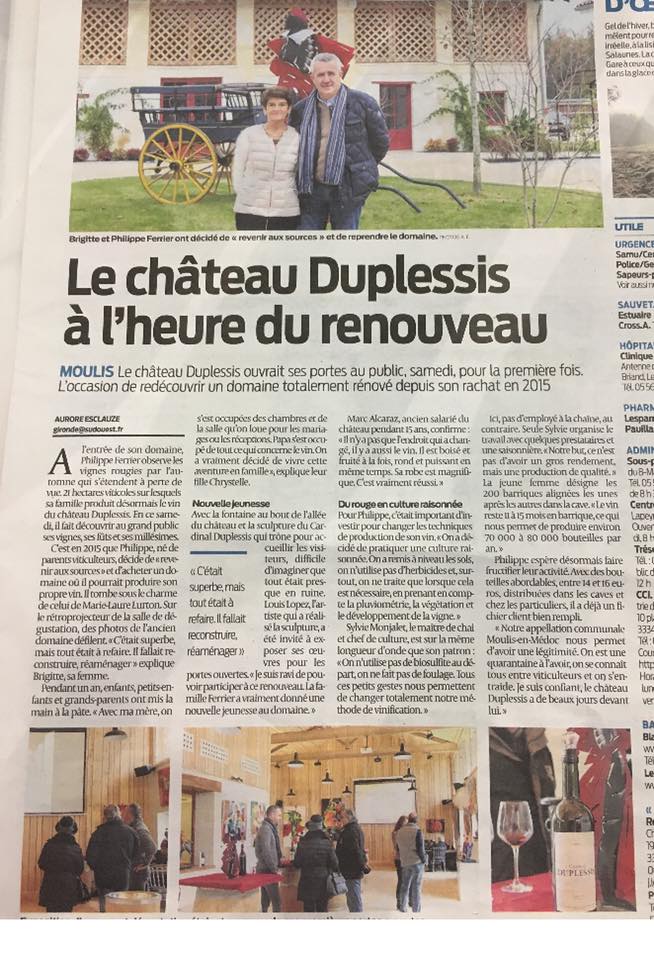28
Mars
Time for change at Château Duplessis.
At the entrance to his vast estate, Philippe Ferrier looks out upon the vineyards as autumn turns the colours of the leaves to red. From these 21 hectares of neatly kept vines, Philippe Ferrier and his family now produce Château Duplessis wine. Today, Saturday, he has invited the public to come and discover the estate, the casks and the vintages. Philippe’s parents were wine-growers. In 2015, he decided to return to his roots and buy an estate on which he could make his own wine. He fell under the charm of Marie-Laure Lurton’s. Pictures of what the place used to be are projected in the tasting room. Brigitte, Philippe’s wife explains : «It was superb ! But we had so much to do. Some things had to be re-built, others re-arranged» It took a year, with grand-children and grand-parents all helping along. Their daughter, Crystelle says : «my mother and I saw to the bedrooms and the hall that we now let out for weddings receptions. My dad looked after the everything to do with the wine making. We really wanted to make this a family adventure». A new youth. It is difficult to imagine that the whole place was in ruins. Now, there is a new fountain at the end of the driveway that leads to the château and a sculpture of Duplessis to greet visitors. Jose Lopez, the artist who made the sculpture was invited to have an exhibition of his works. Says he : «I am delighted to be part of this project. The Ferriers have really rejuvenated the estate». Marc Alcatraz, who has worked for the château for 15 years can confirm : «It’s not just about the surroundings, the wine too has changed. It’s now all at once, woody and fruity, round and powerful. It’s colour is magnificent. A real success !»
Red wine from integrated culture. Philippe felt it was important to invest in new ways to make his wine. «We decided to go for for integrated culture. We levelled the grounds, we don’t use weed-killers and, above all, we only treat the vines when it is absolutely necessary, taking into account the rainfall, the rest of the vegetation and the development of the vines». Sylvie Monjalet, the cellar master and who is in charge of the winemaking process, agrees with her boss : «to start with, we don’t use organic sulphites, we don’t crush the gapes either. All these little things add up and change the whole way we go about winemaking». Here, there is no «assembly line» approach. Sylvie organises the work by herself, helped by few contactors and one seasonal hand. «We are not trying to get the biggest yield. What we want is quality». Showing the 200 casks, neatly lined up in the cellar, the young woman adds : «the wine is kept in a cask for 11 to 15 months, so we can produce between 70 000 to 80 000 bottles
per year.» Philippe now hopes to develop this activity. Thanks to the reasonable price he asks for his wine, between 14 and 16 euros per bottle, sold at wineries or by independent outlets, he already has a good client list. «The Moulis-en-Médoc village appellation gives us the legitimacy we need. Here, all winegrowers know each other and we pull together when in need. I am confident. Château Duplessis has a bright future ahead».


